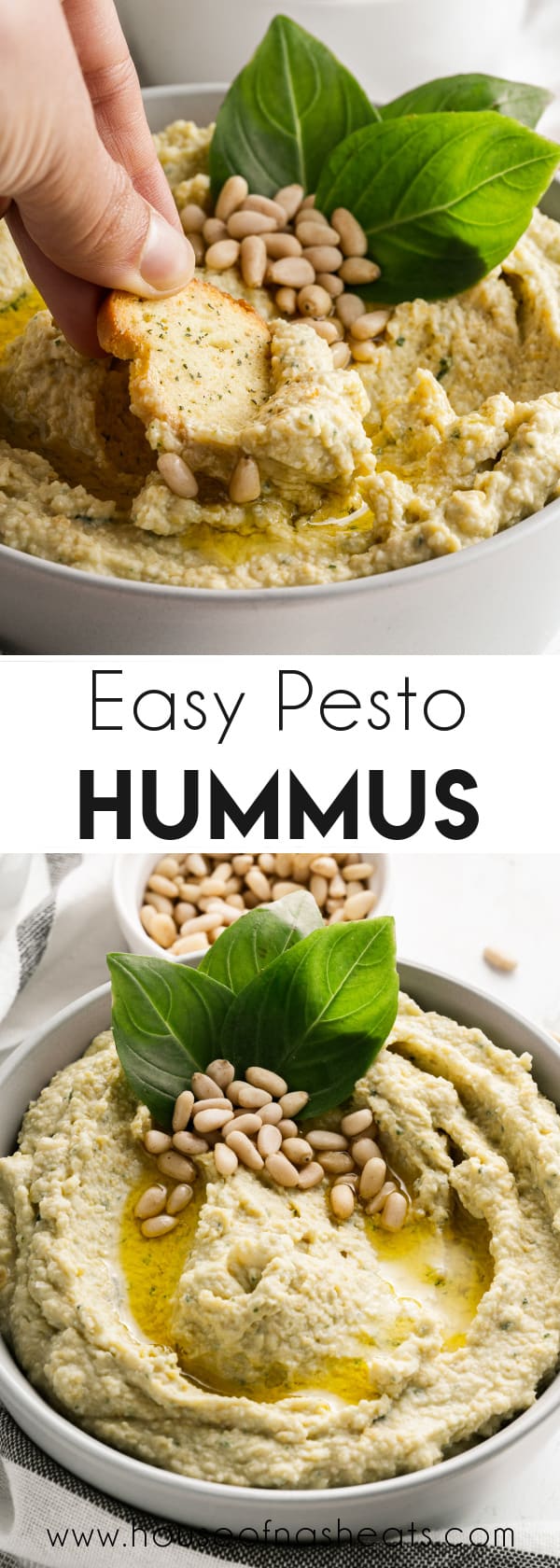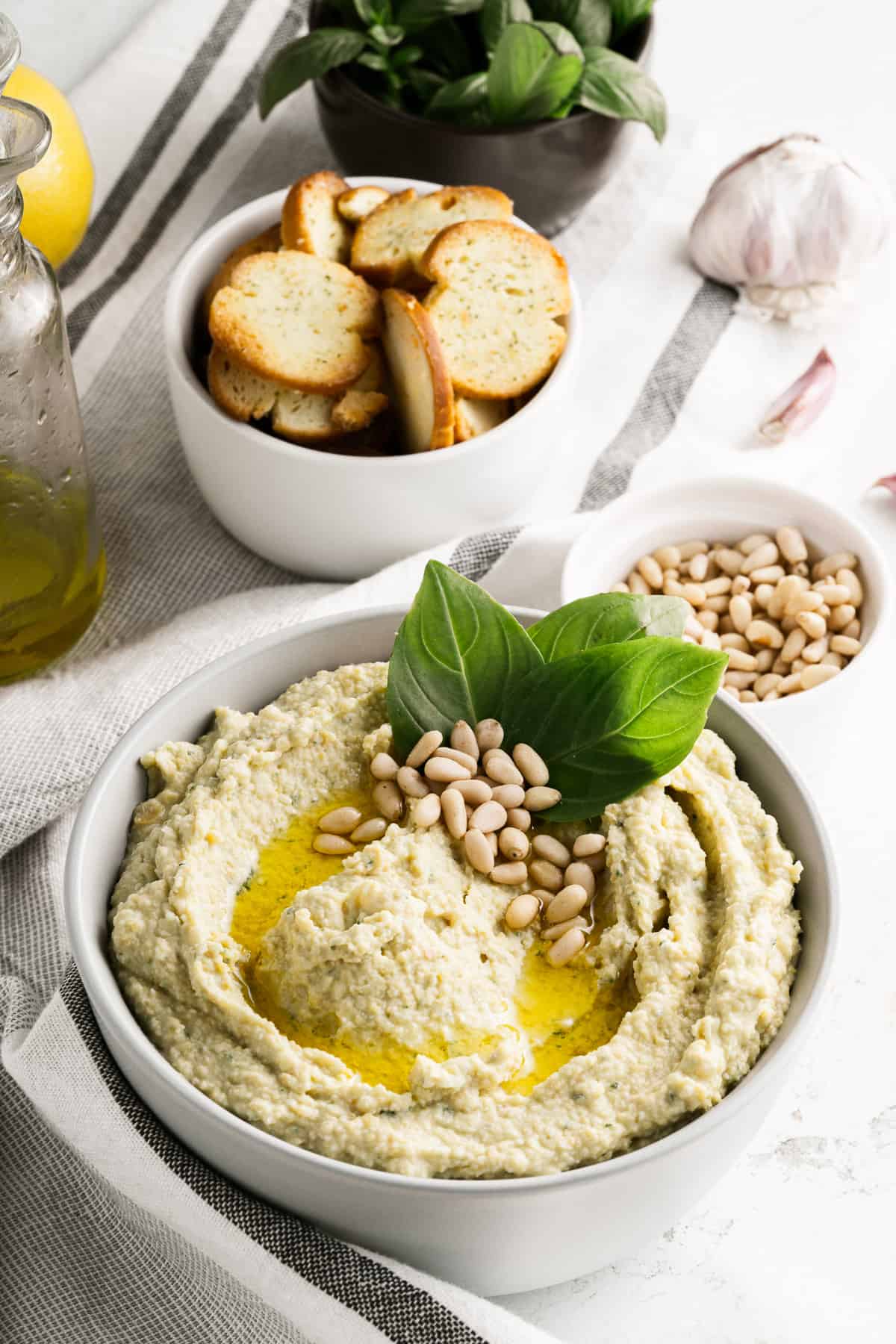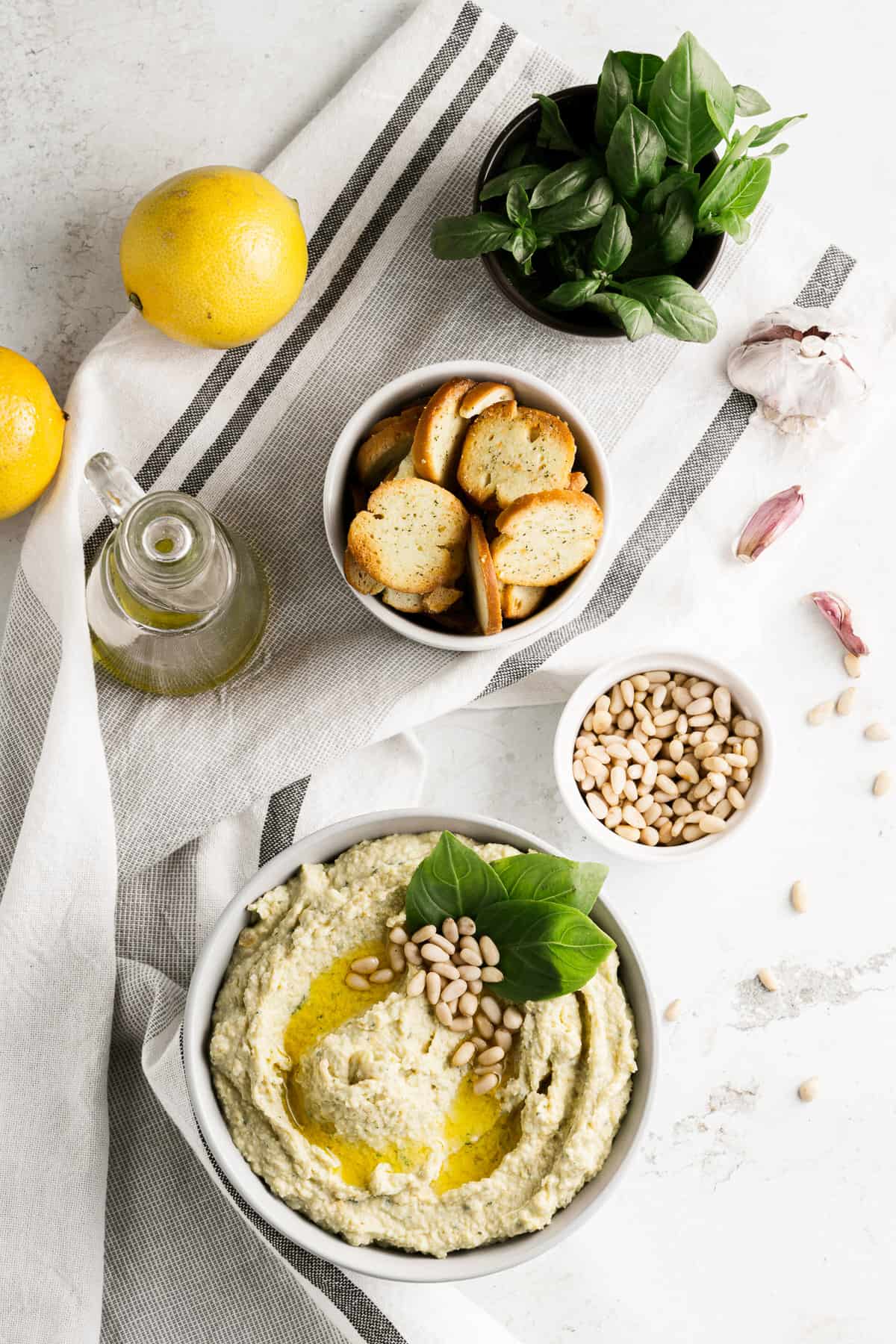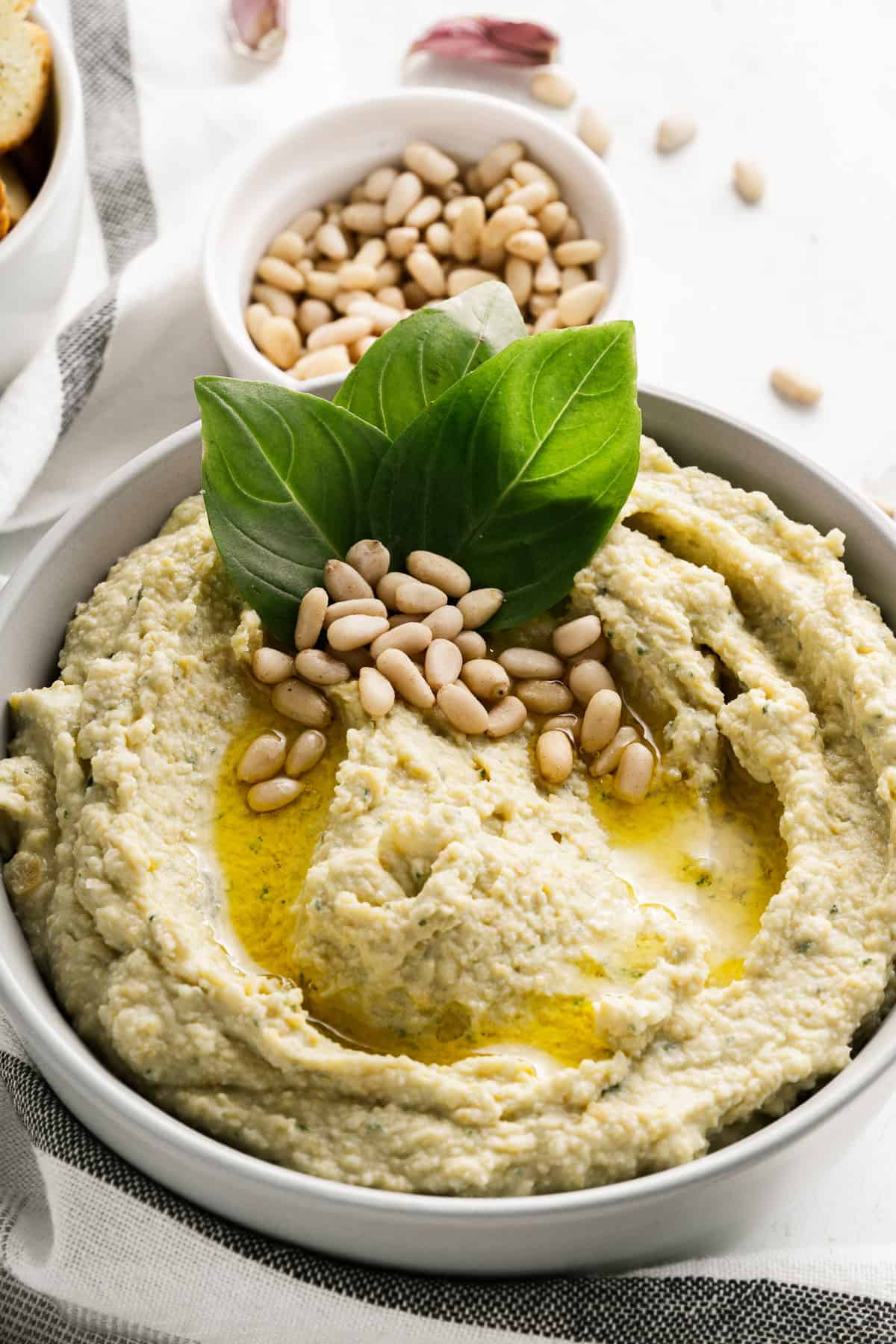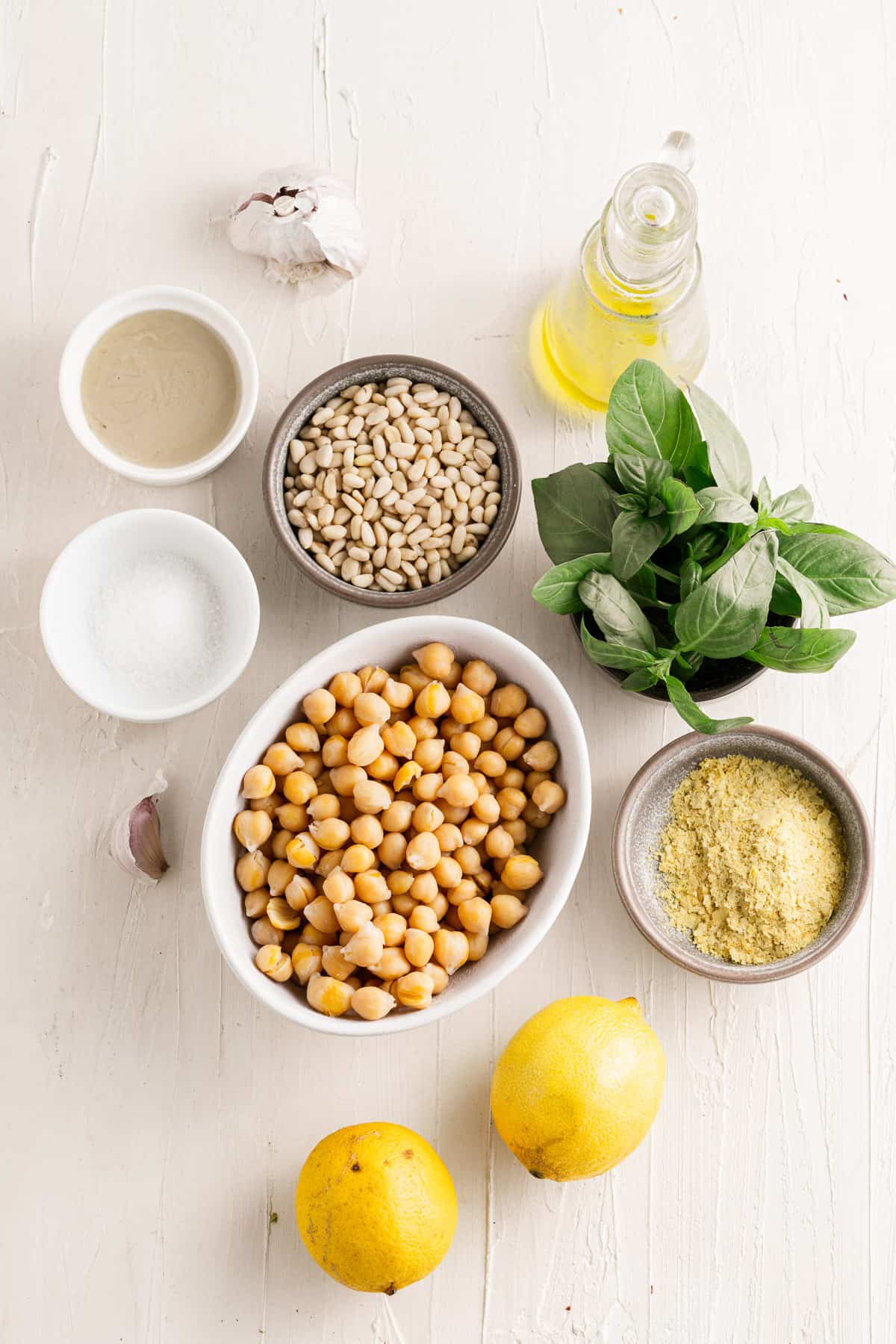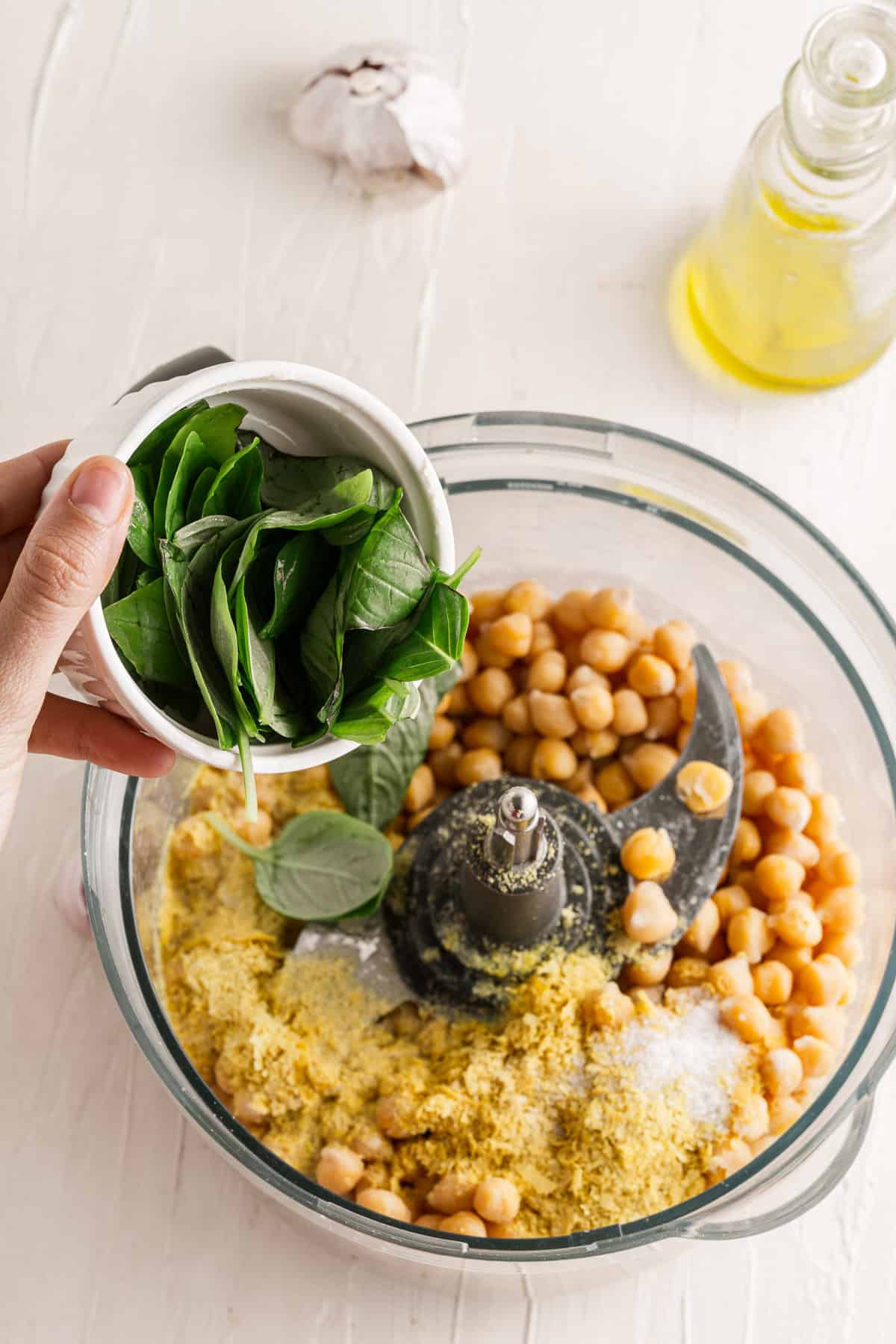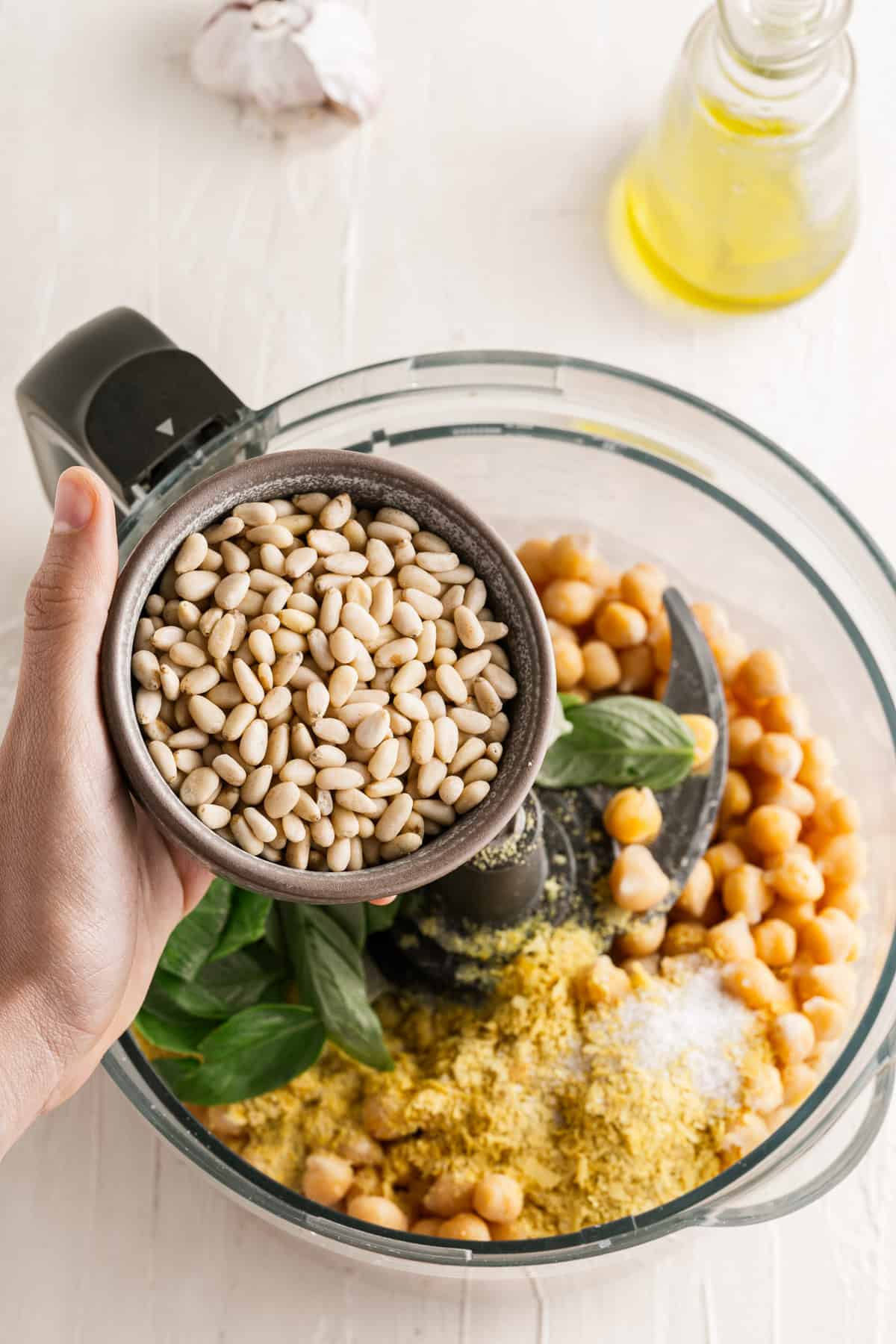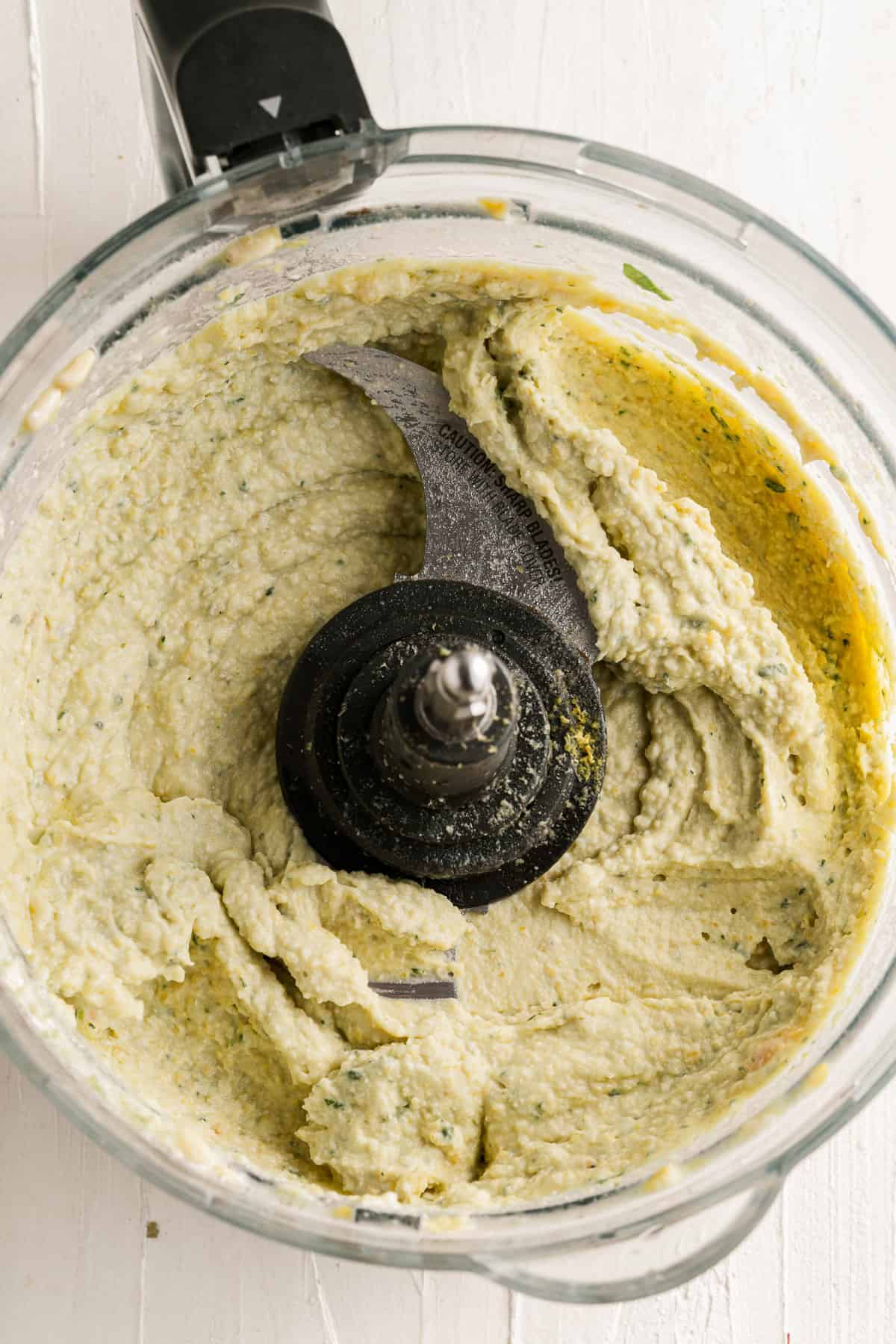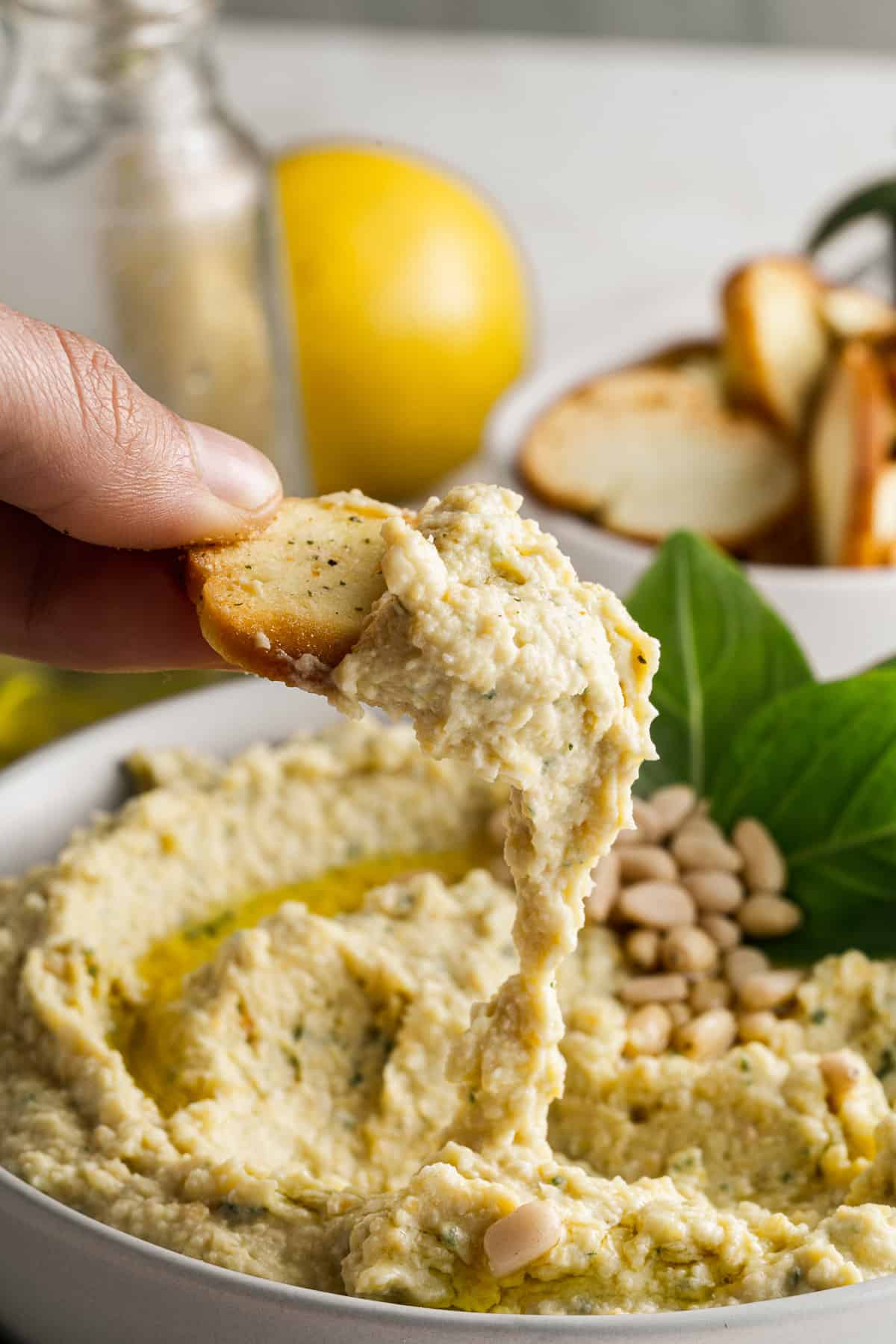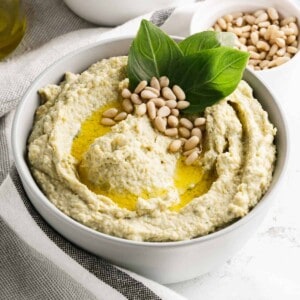We love easy appetizer dips like this, especially when we have friends coming over. Some of our other favorites are 7 Layer Dip, Trader Joe’s Lentil Bruschetta Feta Dip, and Grilled Mexican Street Corn Dip. This simple, healthy dip is a combination of two of our favorite cuisines: Middle Eastern and Italian. Hummus is a traditional Middle Eastern food that was probably invented in Egypt in the 13th century, although some believe it was first created by the Greeks. It’s made with cooked chickpeas, tahini, lemon juice, and garlic that are mashed into a dip or spread and traditionally served with pita bread. We love hummus with pita bread, of course, but it’s also excellent with crunchy veggie sticks and is something I will often send in the girls’ lunches for a healthy snack.
Why this recipe works
It’s as easy as throwing everything in a food processor (affiliate link) and pulsing until it’s as creamy and smooth as you like it. You can use fresh basil leaves or store bought pesto to add that wonderful herby flavor twist to classic hummus. It’s naturally gluten-free! Serve it with tortilla chips or veggies for dipping for a satisfying appetizer dip if you have friends with a gluten intolerance.
Recipe Ingredients
Chickpeas: Canned chickpeas make life easy because they are already cooked, soft, and ready to be added to your hummus. Tahini paste: This ingredient is common to hummus and gives it its distinctive taste. Tahini paste is made from finely ground sesame seeds and can be found at most grocery stores near the peanut butter or in the international foods aisle. Pine nuts: We love pine nuts and often throw them into salads, but they are a classic component in pesto. If you don’t have pine nuts on hand, you could use walnuts instead. Fresh basil leaves: I don’t recommend replacing fresh basil with dried basil for this recipe. If you can’t get your hands on fresh basil, I would instead use some good quality pesto sauce in its place.
How to Make this Recipe
Add all of the hummus ingredients to the bowl of a large food processor (affiliate link). Close and secure the lid, then pulse until everything is broken down and forms a creamy, smooth spread. You might need to scrape things down from the sides if they don’t quite get blended in and pulse a little more, but it doesn’t take more than a minute or two before it’s wonderfully creamy and spreadable like the hummus pictured here. Transfer to an airtight container and store in the fridge for up to 5 days. We like to serve it in a bowl garnished with a few extra pine nuts sprinkled on top and a drizzle of olive oil, but you could also garnish with a few reserved chickpeas and a drizzle of pesto sauce to indicate the flavor of the hummus.
Recipe Tips
I really recommend using a food processor over a blender. A blender can work, but in my experience it’s just easier to do thick spreads like this in a food processor. Serve your hummus with toasted or soft pita bread, crunchy bagel chips or pita chips, or fresh vegetables like crunchy carrot sticks, peppers, cucumbers, etc. If you want a greener color to your hummus, try adding a handful of spinach before processing everything. It adds a natural darker green tint than the basil leaves themselves do. Store any uneaten hummus in the fridge. It can be eaten immediately after making it or served chilled straight out of the fridge.
More Appetizer Recipes
Buffalo Chicken Dip Maryland Hot Crab Dip Easy Refried Bean Dip Jalapeño Popper Dip with Bacon
Let me know what you thought with a comment and rating below. You can also take a picture and tag me on Instagram @houseofnasheats or share it on the Pinterest pin so I can see.

